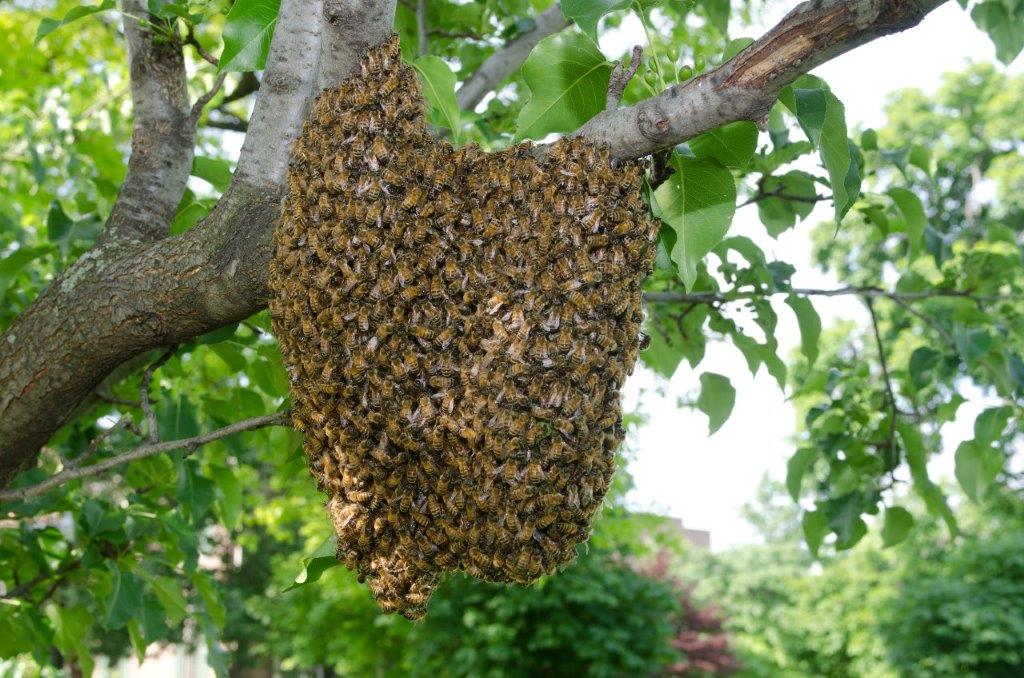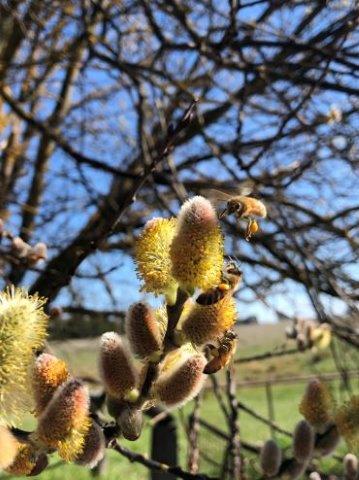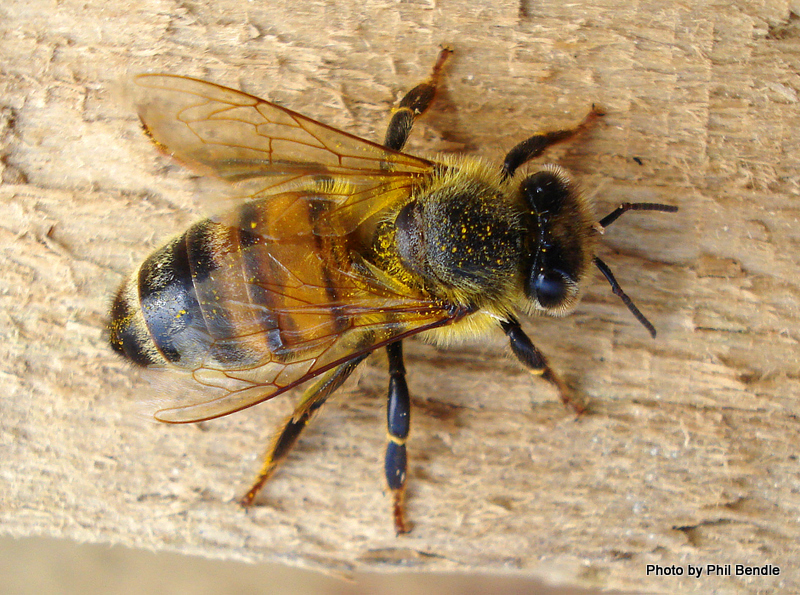
European honeybee


Apis mellifera
Should I report?
The European honey bee (Apis mellifera) was brought into Australia over 190 years ago. It is the common domestic honey bee found in Australia. This species is not a biosecurity threat. You do not need to report it.
Description
The European honey bee ranges in size from 13-16mm and can vary in colour but are usually seen with yellow abdominal banding and fine visible hairs all over the body. Their antennae are slightly longer than their head and they have light brown wings with dark veins.
European honey bees are a social species and live in colonies of approximately 40,000 to 80,000 bees. Inside their hives they build parallel wax structures to house food storage and their brood and prefer to nest in a cavity such as a hollow tree or house wall.
Swarming can occur once or twice a year depending on a number of factors such as health, climate and floral resources. European honey bees are generally docile with a placid temperament, only stinging when threatened.
Distribution
European honey bees are distributed throughout all of Australia including establishment in Norfolk Island, Lord Howe Island and Kangaroo Island.
Benefits
European honey bees play an important role in large scale agricultural pollination services and provide beeswax and honey to the domestic and export market.


